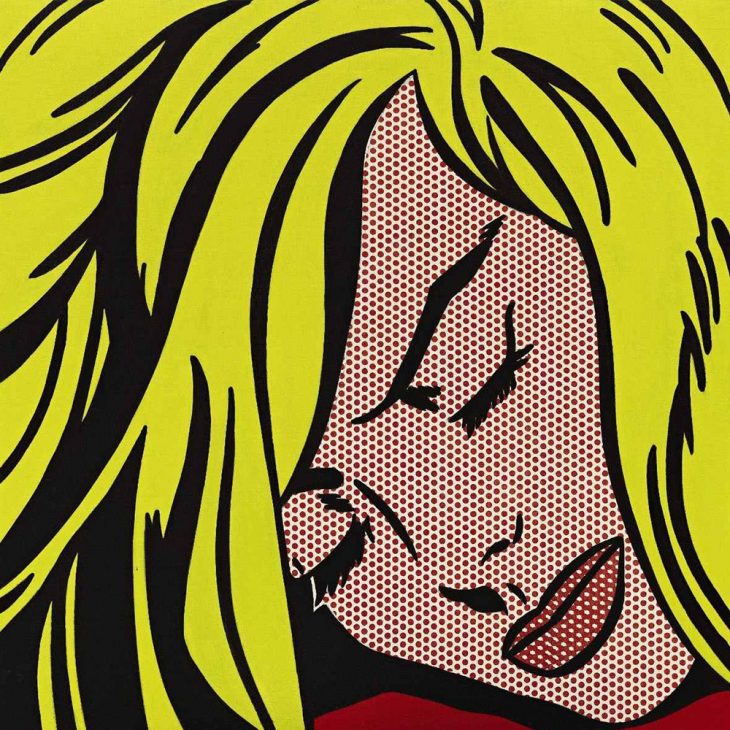Roy Lichtenstein
Fundamental Paintings to Understand the History of Painting
We could make this publication thanks to small donations. How is 3 minutos de arte supported?
Sleeping Girl (1964). Roy Lichtenstein
Oil and Magna on canvas. 91 cm x 91 cm
Private collection
This work, which reproduces a frame of a comic strip —a resource that can be considered as a “trademark” of Lichtenstein— is an icon of Pop art.
Pop means “popular.” It refers to what we live and consume on a daily basis, to what is mass-produced. Art is inspired by advertising, television, comics, supermarket shelves. We consume art and live immersed in a work of art.
There is a deep irony behind it, and in this work we can observe the stereotypical drawing of women (a woman who has been created for the comics, to be “consumed”, to please everyone): the materialistic and postmodern human being, without ideals, a consumerist in search of immediate pleasure, also ends up being a mass-produced product, unoriginal, cheap.
Lichtenstein would imitate his graphic or cartoon sources, he would sketch an image, making his own changes, then he would trace this drawing onto canvas using an opaque projector, he would draw it again on a new scale. Finally, he would paint this image with oil and magna (an acrylic diluted in a solvent that dries quickly and is used for large surfaces).
But what is striking are those red dots with which he colored the face. At that time, comics were printed with a coloring technique called “Ben-Day dots” (a name without mystery: it was created by Benjamin Day). As in Pointillism, the use of dots makes the colors blend (it is ideal for working lights and shadows, and for saving paint).
Lichtenstein would include the Ben-Day dots in his representations, making his style even more recognizable, “more Lichtenstein.”
And so, with that simplicity, just with white, black and a couple of primary colors, the artist exposes the spirit of our society and challenges us to reflect.
Recommended links:
Campbell’s Soup Cans (1962), Andy Warhol.
F-111, the Huge Pop Art Painting of James Rosenquist.
You can also find more material using the search engine.




0 Comments